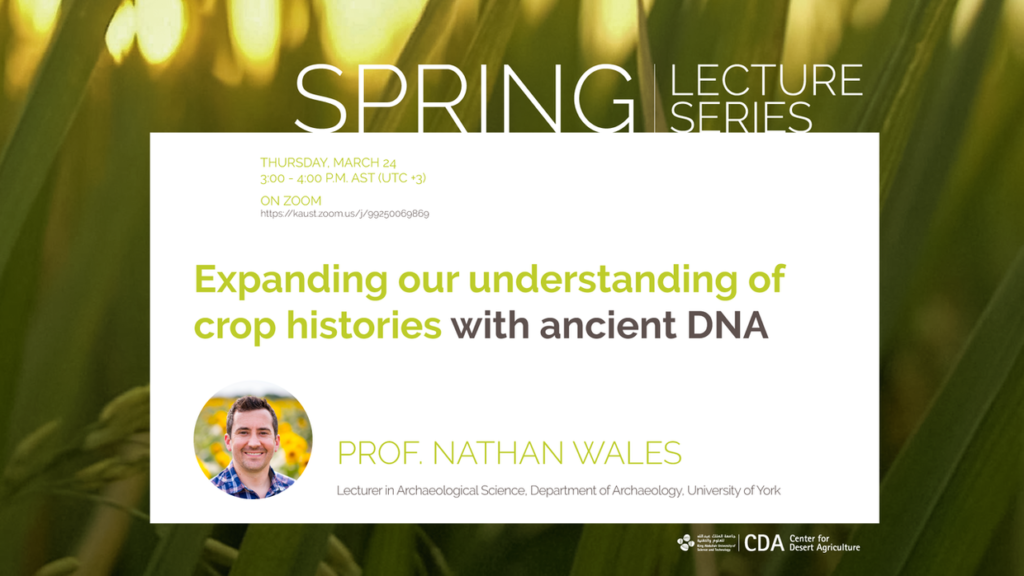
Thursday, March 24
3:00 – 4:00 p.m.
On Zoom
Expanding our Understanding of Crop Histories with Ancient DNA
By Nathan Wales
Lecturer in Archaeological Science, Department of Archaeology, University of York
Theme
Ancient DNA – hosted by Prof. Brande Wulff.
Abstract
Food plays a special role in human societies. In addition to providing nutrients and calories, food is often revered within different traditions. For archaeologists, identifying traces of ancient foods can give a new perspective on how cuisine became incorporated into cultural identities. Thanks to ancient DNA technologies, genetic testing of archaeological plants provides a powerful new way to investigate how crops changed over the past 10,000 years.
This presentation explores the limits of these methods and how I have applied them in my own research on sunflower, maize and grapevine. Through the genetic histories from ancient plant tissues, we stand to learn a great deal about past agricultural practices, with the potential of applying these findings to future crop breeding programs.
About the speaker
Nathan started his academic career in archaeology at Truman State University, and during graduate studies at the University of Connecticut, was trained in genetic analyses. Through this interdisciplinary background, Nathan applies ancient DNA methodologies to explore the domestication histories of plants. In 2018 Nathan joined the Department of Archaeology at the University of York where he leads the Ancient DNA laboratory at the BioArCh Facility.
Nathan’s most recent work has focused on the origins and spread of domesticated sunflower, maize, and grapevine. By exploring genes under selection and the propagation of specific varieties, he aims to understand how humans have utilized plants in the past and how this may impact agriculture.
Visit the Spring Lecture Series webpage to view the full schedule and learn more about the upcoming lectures.
This opportunity is brought to you by the Center for Desert Agriculture.

